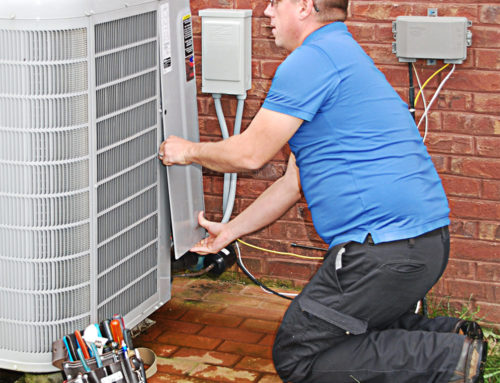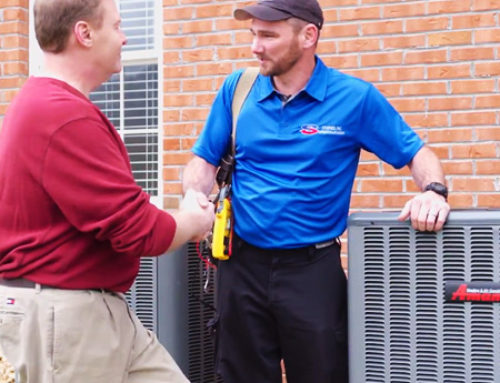Nearly every homeowner knows about the potential money-saving benefits of programmable thermostats. According to the U.S. Environmental Protection Agency, about 25 million homes have programmable thermostats, but many homeowners fail to use their thermostats in ways that yield significant energy cost savings. While programmable thermostat manufacturers continue to make product improvements to make them easier to use, we’ve put together a quick guide to setting up your smart temperature control device during the summer and winter months for year-round savings.
Choose the Right Programmable Thermostat
Control units are made in digital and electromechanical formats, although digital programmable thermostats are the most popular ones on the market today. Each is designed to work with specific types of heating and cooling, or HVAC, systems. The most common include heat pumps, gas furnaces, and electric heating units.
Types of Programmable Thermostats by Features
When it comes to finding a programmable thermostat that fits your family’s lifestyle, there are many choices on the market today. According to Energy Information Administration research, the power that you use to heat and cool your home is 42 percent of your total household energy consumption on average. Programmable thermostats save you money by lowering energy consumption when your home is unoccupied or when you otherwise don’t need as much heating and cooling power. Here are a couple programmable thermostats that are available through HVAC companies, online retailers, or local hardware stores.
#1 Seven-Day Programming
If your family’s days are filled with work, school, soccer practices, and ballet lessons, you’ll want to consider the seven-day programmable thermostat. This control unit allows you to program a different temperature setting each day, season after season. Its settings are flexible enough to accommodate unexpected activities as well as hectic business travel schedules. Use the money that you save on utility bills for that family dream vacation.
#2 Smart Programmable Thermostats
The latest programmable thermostats are often connected to other smart home systems. Many of these smart programmable thermostats allow property owners to control temperature settings at home while on the go. Homeowners use a wireless internet signal to communicate with the thermostat device via their smartphones.
Other smart thermostats use machine learning technology to sense and record your family’s routine. After gathering enough data about your habits and temperature preferences, the device automatically adjusts temperatures to make you comfortable when you’re at home and lower energy consumption when you’re away.
Some smart programmable thermostats use geo-fencing technology to get you energy cost savings in the most convenient way. By connecting with your phone’s GPS, the thermostat senses when you leave and return to your house. You can program this thermostat to heat or cool your home to a certain temperature based on your location. That way, you’ll never arrive home to an indoor climate that’s too hot or too cold again.
Programmable Thermostat Location and Suggested Settings
According to the U.S. Department of Energy, you can save up to 10 percent annually by making daily thermostat adjustments during winter and summer. The agency suggests setting your thermostat to 68 degrees in the winter during times when you’re at home and turning the thermostat down 10 degrees when you’re away. If you’re away for at least eight hours every day, the savings are significant. During summer, Department of Energy analysts advise you to set your thermostat to 78 degrees when you’re at home and raise the thermostat temperature to as high as you can when you’re away from home. You’ll have to make thermostat setting adjustments for humidity control during those times.
In Conclusion
If you’ve programmed your home’s thermostat and your indoor climate is not as comfortable as you’d like, contact your local HVAC contractor for a system inspection. Technicians who are employed by licensed HVAC companies have the skill and knowledge to test your HVAC system and troubleshoot your thermostat’s connection. You may be one HVAC repair away from a more comfortable home and long-term energy savings.






The modern world is slowly phasing out its dependence on fossil fuels and oil. Budget-friendly thermostat heat pumps have been designed to replace this dependency with a new, more efficient energy source called electricity. Not only does the budget-friendly thermostat heat pump save money in utility bills but also helps reduce emissions into our atmosphere by working as an air conditioner or heater depending on which one needs you right now! In fact, these devices are so popular that people all over the globe search for them online while they themselves fumble through masses of websites offering such deals hoping to find something perfect for their homes or offices.
Hey, thanks! Some more math :)
According to Energy.gov, the best way to save money on heating bills is to set back the temperature of your home at least 8 degrees for 8 hours or longer. In fact, you can save 1% on your heating bill for every degree that you lower the thermostat
Thank you for sharing all this info! Just want to add one more thing. Lower the temperature if you’re looking to save more money and energy. Even reducing the thermostat temperature by 1°C could save you £40 a year, and I bet you wouldn’t even notice.